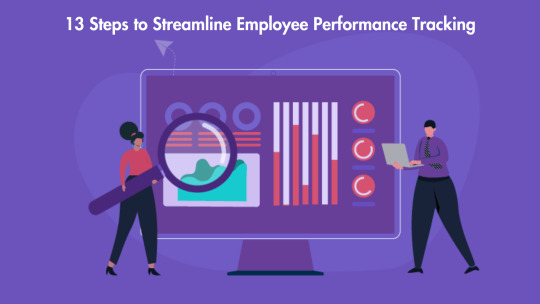#Performance Tracking
Explore tagged Tumblr posts
Text
Tracking Performance: FP&A Metrics Optimized by Finance Outsourcing
In a data-driven world, identifying and monitoring the right financial metrics is essential. Finance and accounting outsourcing empowers FP&A teams to track key performance indicators with greater accuracy and strategic intent.
One of the most critical elements of this process is monitoring financial KPIs. Outsourced experts focus on metrics like gross profit margin, operating cash flow, and return on investment, which provide a clear picture of business health and performance.
Effective performance tracking goes beyond just reporting numbers—it involves analyzing trends, comparing benchmarks, and evaluating progress against strategic goals. By outsourcing, companies gain access to analytical tools and dashboards that enhance transparency and decision-making.
Modern FP&A dashboards are designed to present real-time financial data in visual formats that are easy to interpret. These dashboards, often part of the outsourced solution, enable leadership teams to respond quickly to changes and identify areas for improvement.
Metric analysis allows businesses to understand the drivers behind financial trends. Outsourcing providers bring deep analytical expertise to interpret data, assess risks, and recommend corrective actions where needed.
Ultimately, finance and accounting outsourcing offers a structured and insightful approach to managing key financial metrics. It transforms raw data into actionable intelligence, enabling organizations to remain agile, focused, and performance-driven.
#finance and accounting outsourcing#financial KPIs#performance tracking#FP&A dashboards#metric analysis
0 notes
Text

1 note
·
View note
Text
Exploring the Future of E-Bikes: Velotric’s Velo Electric Fitness Bike
The E-Bike industry is rapidly evolving, and one brand that stands out is Velotric. Known for their commitment to quality and innovation, Velotric has introduced the Velo Electric Fitness Bike, which is designed to enhance your cycling experience while promoting a healthy lifestyle.
With its sleek design and advanced technology, the Velo Electric Fitness Bike offers an enjoyable ride that caters to both casual cyclists and fitness enthusiasts alike. The bike features a powerful electric motor that provides assistance, making it easier to tackle hills and longer distances. This means you can enjoy the great outdoors without the fear of fatigue.
Moreover, the Velo Electric Fitness Bike is equipped with smart features that track your performance, helping you to set and achieve your fitness goals. Whether you're commuting to work or enjoying a leisurely ride on the weekend, this bike ensures that you stay active and engaged.
In addition to its functionality, Velotric's commitment to sustainability is commendable. By promoting electric biking, they contribute to reducing carbon emissions and encourage a greener mode of transportation.
In conclusion, if you’re looking for an E-Bike that combines style, performance, and a focus on fitness, the Velotric Velo Electric Fitness Bike is an excellent choice. Step into the future of cycling with Velotric and experience the joy of riding like never before!
#sustainability#E-Bike#cycling#fitness#performance tracking#electric motor#healthy lifestyle#green transportation
0 notes
Text
Exploring the Future of E-Bikes: Why Urtopia's Dual Battery E-Bike is a Game Changer
The e-bike industry is rapidly evolving, and Urtopia is at the forefront with its innovative dual battery e-bike. This remarkable technology allows riders to enjoy longer journeys without the constant worry of running out of battery.
With Urtopia's dual battery system, cyclists can explore more, whether they're commuting to work or embarking on weekend adventures. The added power not only enhances the riding experience but also promotes a more sustainable mode of transportation.
Urtopia’s design is sleek and modern, making it not only functional but also visually appealing. The integration of smart technology ensures that riders can track their performance and battery life with ease.
Overall, Urtopia is paving the way for a brighter future in the e-bike industry, and their dual battery e-bike is a fantastic option for anyone looking to enhance their cycling experience. Embrace the ride and discover the possibilities!
#e-bikes#smart technology#Urtopia#sustainable transportation#commuting#dual battery#cycling#performance tracking
0 notes
Text
Exploring the Long Range Electric Bike: Urtopia's Innovation
Hello everyone! I'm excited to share my thoughts on the incredible advancements in the E-Bike industry, particularly focusing on Urtopia and their long range electric bike offerings. Urtopia has made a name for itself by combining cutting-edge technology with sleek design, making their bikes not only functional but also stylish.
Urtopia's long range electric bike is designed for those who love to explore without the worry of running out of battery. With impressive mileage on a single charge, these bikes empower riders to take longer trips and discover new places with ease. The lightweight frame and intuitive controls make for a smooth riding experience, whether you're commuting to work or enjoying a weekend adventure.
Moreover, Urtopia emphasizes sustainability and eco-friendliness in their designs, contributing to a greener future while providing an exhilarating ride. The integration of smart technology ensures that riders can track their performance and battery life effortlessly.
In conclusion, if you're in the market for a long range electric bike, Urtopia is definitely a brand worth considering. Their commitment to quality and innovation makes every ride enjoyable and fulfilling. Happy cycling!
0 notes
Text
#Expense Management Software#Business Workflow management#Attendance tracking#Task automation#Real-time updates#Performance tracking
0 notes
Text
A Comprehensive Guide to Understanding and Improving Your Website's Analytics
Are you making the most of your website’s analytics? In today’s world, knowing what your website’s data means is key to making smart choices for your business1. This guide will show you how to use important metrics like pageviews and traffic sources to improve your site. We’ll look at the main metrics you should watch, why website analytics matter, and how to use Google Analytics to boost your…
#Analyzing website trends#Conversion rate optimization#Data analysis for websites#Google Analytics tutorial#Improving site performance#Performance tracking#SEO analytics tools#User engagement metrics#Web traffic insights#Website visitor behaviour
1 note
·
View note
Text
https://www.bloglovin.com/@vastedge/kpi-dashboards-a-visual-guide-to-business
Unlock the power of KPI dashboards with this visual guide. This blog post provides insights into how KPI dashboards can enhance business performance by offering clear, actionable data visualizations. Learn how to design and utilize these dashboards to monitor key metrics, make informed decisions, and drive strategic growth.
#KPI Dashboards#Business Performance#Data Visualization#Key Metrics#Dashboard Design#Performance Tracking#Business Intelligence#Strategic Growth#Data Analytics#Visual Analytics
0 notes
Text
0 notes
Text
Maximizing Your SEO Potential with DA Checker Tools

In the fiercely competitive world of digital marketing, optimizing website performance is crucial for achieving success. Search engine optimization (SEO) professionals rely on various tools to gauge a website's potential and make informed decisions. Among these tools, Domain Authority (DA) checker tools stand out as indispensable resources for monitoring and improving website metrics.
What is Domain Authority?
Domain Authority is a predictive metric that estimates a website's ability to rank on search engine result pages (SERPs). Score is decided between 1 and 100, with higher scores indicating a stronger likelihood of ranking well. The calculation of DA involves multiple factors, including the number and quality of inbound links to the site. While DA itself does not directly influence SERP rankings, it serves as a critical indicator of a website’s overall SEO strength and its position relative to competitors.
Benefits of Using DA Checker Tools
DA checker tools offer a range of benefits that make them essential for SEO optimization:
Competitive Analysis: These tools enable you to compare your website’s DA with those of your competitors. By understanding where you stand, you can identify opportunities for improvement and develop strategies to surpass your competition.
Link Building: DA scores help in evaluating the quality of potential link-building opportunities. By focusing on acquiring links from high-authority sites, you can enhance your own DA, thereby improving your website’s credibility and ranking potential.
Performance Tracking: Regular use of DA checker tools allows you to monitor the effectiveness of your SEO efforts. This continuous tracking helps ensure that your strategies are working and highlights areas that need adjustment for ongoing improvement.
How to Effectively Use DA Checker Tools
Using a DA checker tool is a simple process. Enter the URL of the website or page you want to analyze, and the tool will generate detailed information about its DA and PA. This data is critical for refining your SEO strategies, pinpointing strengths, and addressing weaknesses.
Strategic Application
Integrating insights from DA and PA checks into your overall SEO strategy is crucial for maximizing their benefits. Combining these metrics with other SEO practices—such as keyword optimization, quality content creation, and technical SEO enhancements—can lead to significant improvements in website performance. The Da and Pa checker tool is particularly useful, allowing you to focus on both domain-wide and page-specific strategies, thus providing a more nuanced approach to SEO.
DA checker tools are vital for anyone serious about enhancing their website’s SEO. By providing crucial insights into Domain Authority and Page Authority, these tools enable users to make informed decisions, track their progress, and refine their strategies for better ranking potential. Incorporating these tools into a comprehensive SEO plan can significantly boost your website’s performance and visibility on search engines, driving more traffic and achieving greater success in the digital marketing landscape.
0 notes
Text
The Impact Of Team Performance Management On Employee Engagement

Employee engagement is a crucial factor determining the success and growth of any organization in this dynamic and competitive business landscape. Effective team performance management plays a significant role in fostering a work environment that promotes high levels of employee engagement. By leveraging high-performance team management strategies, organizations can ensure their teams are not only productive but also motivated and committed to their roles. This article explores the impact of team management performance on employee engagement, focusing on the importance of performance tracking, project management, and user activity tracking software.
Team Performance Management:
Team management performance involves a systematic approach to improving team efficiency and effectiveness. It includes setting clear objectives, providing regular feedback, and implementing performance-tracking mechanisms. This approach ensures that teams are aligned with the organization's goals and working collaboratively towards achieving them.
High-performance team management takes this a step further by focusing on creating teams that consistently deliver exceptional results. It involves managing performance but also fostering a culture of continuous improvement and innovation.
Link Between Performance Management and Employee Engagement:

Employee engagement refers to the emotional commitment of an employee toward their organization and its goals. Engaged employees are more likely to be inspired, effective, and loyal. Here’s how effective performance management for teams can enhance employee engagement:
Clarity and Alignment: When teams have clear goals and understand how their work contributes to the organization's success, they are more likely to be engaged. Performance management provides this clarity by setting specific, measurable, achievable, relevant, and time-bound (SMART) objectives.
Feedback and Recognition: Regular feedback and recognition are vital for maintaining high levels of engagement. Performance management systems ensure that team members receive constructive feedback and are recognize for their contributions.
Development Opportunities: Engaged employees seek growth and development. Performance management identifies skill gaps and provides opportunities for training and career advancement.
Collaboration and Teamwork: High-performance team management fosters a collaborative environment where team members support each other. This sense of camaraderie and collective effort enhances engagement.
The Role of Performance Tracking
Performance tracking is essential for monitoring progress and identifying areas for improvement. By tracking performance metrics, organizations can ensure that teams stay on course and meet their objectives. Performance tracking involves the use of various tools and techniques, including user activity-tracking software.
Effective Performance Management Tool
Several tools can aid in managing team performance and enhancing employee engagement.
EmpMonitor: EmpMonitor is a comprehensive user activity-tracking software that helps organizations monitor employee performance and productivity. There are some key features like activity Monitoring, Project Management Integration, Real-Time Reporting, and employee Engagement Metrics.
Asana: A project management tool that helps teams organize, track, and manage their work.
Trello: A visual collaboration tool that organizes tasks into boards, making it easy for teams to track progress.
Slack: A communication platform that facilitates collaboration and real-time communication among team members.
High-Performance Team Management Strategies

To build and maintain high-performance teams, organizations must adopt specific strategies focused on individual and collective performance. Here are some effective strategies:
Goal Setting: Establish clear, achievable goals for the team. Confirm that each team member comprehends their part in reaching these goals.
Regular Reviews: Complete periodic performance reviews to evaluate gain and provide feedback.
Training and Development: Offer continuous learning opportunities to enhance skills and knowledge.
Recognition and Rewards: Recognize and reward team members for their contributions to motivate and encourage high performance.
Collaboration Tools: Use collaboration tools to facilitate communication and teamwork.
The Benefits of High-Performance Teams
High-performance teams bring numerous benefits to organizations, including:
Increased Productivity: High-performance teams are more efficient and productive, delivering quality results promptly.
Improved Morale: Engaged and motivated teams have higher morale, which reduces turnover and enhances job satisfaction.
Innovation: Collaborative and engaged teams are more likely to generate innovative ideas and solutions.
Organizational Growth: High-performance teams contribute significantly to the overall growth and success of the organization.
You Can Also Watch:
youtube
Conclusion:
Team performance management is a critical component of fostering employee engagement. By implementing effective performance tracking and leveraging tools like EmpMonitor, organizations can ensure their teams remain motivated, productive, and aligned with organizational goals. High-performance team management strategies enhance individual and team performance contribute to a positive and collaborative work environment. Emphasizing these aspects can lead to sustained organizational success and a highly engaged workforce.
#performance management#high-performance team management#performance management for teams#high-performance team#performance tracking#project management#activity tracking software#Youtube
0 notes
Text
How to Use Adobe Analytics to Track Your E-Commerce Performance
Unlocking the Secrets of E-Commerce Success: Leveraging Adobe Analytics Navigating the ever-evolving world of e-commerce can be a daunting task, but with the right tools and strategies, you can unlock the secrets to sustained success. Adobe Analytics is a powerful platform that offers a comprehensive suite of features to help entrepreneurs and business owners like yourself optimize their online…

View On WordPress
0 notes
Text
Explore the benefits of multi-channel marketing campaigns to boost your reach, engagement, and brand consistency. Learn how to integrate different channels, craft cohesive messaging, and track performance for effective strategies. Contact Koobr today to elevate your marketing efforts and drive growth.
#multi-channel marketing#increased reach#engagement#brand consistency#customer insights#integrated strategy#cross-promoting content#marketing automation#cohesive messaging#personalised content#performance tracking#data analysis#continuous optimisation#marketing goals#Koobr
0 notes
Text
13 Steps to Streamline Employee Performance Tracking

Employee performance monitoring is essential for businesses to ensure productivity and efficiency. However, manual tracking processes can be time-consuming and prone to errors. By streamlining the process, businesses can save time and resources while improving accuracy. Here are 13 steps to streamline employee performance tracking using workforce management tools and performance trackers:
Define Clear Goals and Expectations
Establishing clear goals and expectations is crucial for an effective employee performance tracker. By defining specific, measurable, achievable, relevant, and time-bound (SMART) goals, employees understand what is expected of them. This clarity fosters motivation and accountability, leading to improved performance.
Choose the Right Workforce Management Tool
Selecting the right workforce management tool is essential for streamlining performance tracking. Look for a tool that aligns with your organization's needs and goals. Features such as time tracking, task management, and performance analytics can help you track employee performance accurately and efficiently.
Implement an Employee Performance Tracker
Using an employee performance tracker allows you to monitor progress toward goals and track key performance indicators (KPIs) relevant to each employee's role. It helps you identify areas for improvement and provide targeted feedback.
Provide Regular Feedback
Regular feedback sessions are essential for keeping employees informed about their performance. Use the performance tracker to provide specific and constructive feedback, highlighting areas of strength and areas for improvement.
Encourage Employee Self-Assessment

Encouraging employees to assess their performance can lead to greater self-awareness and motivation. Use self-assessment as a tool for employee development and improvement, allowing employees to take ownership of their performance.
Offer Training and Development Opportunities
Providing training and development opportunities shows employees that you are invested in their growth. Use the performance tracker to identify areas where training is needed, helping employees improve their skills and performance.
Use Performance Data for Decision-Making
Using data from the performance tracker allows you to make informed decisions about employee performance. Identify trends and patterns to improve overall performance, helping you allocate resources effectively.
Automate Performance Tracking Processes
Automating performance-tracking processes can save time and reduce errors. Use automation to streamline tasks such as attendance monitoring and performance reviews, freeing up time for more strategic activities.
Integrate Performance Tracking with Other Systems
Integrating performance tracking with other systems, such as payroll and HR systems, ensures that data is shared seamlessly between systems. This integration reduces duplication of effort and improves data accuracy.
Review and Improve the Process Regularly
Regularly reviewing the performance tracking process allows you to identify areas for improvement. Solicit feedback from employees and managers to make the process more effective, ensuring that it continues to meet the needs of your organization.
Define Clear Goals and Expectations

Establishing clear goals and expectations is fundamental for an effective employee team tracking software. Clear goals provide employees with a sense of direction and purpose, helping them understand what is expected of them. When setting goals, ensure they are specific, measurable, achievable, relevant, and time-bound (SMART). This clarity not only helps employees focus their efforts but also allows managers to assess performance objectively. Additionally, clear expectations help prevent misunderstandings and promote a positive work environment based on transparency and accountability.
Choose the Right Workforce Management Tool
Selecting the right workforce management tool is essential for streamlining performance tracking and enhancing productivity. When choosing a tool, consider your organization's specific needs and goals. Look for features such as time tracking, task management, and performance analytics. These features can help you track employee performance more effectively, identify areas for improvement, and allocate resources efficiently. By investing in the right tool, you can streamline your performance-tracking processes and drive better business outcomes.
Implement an Employee Performance Tracker
Implementing an employee performance tracker can provide valuable insights into employee performance and help you make informed decisions. A performance tracker allows you to monitor progress toward goals and track key performance indicators (KPIs) relevant to each employee's role. By regularly reviewing performance data, you can identify trends, recognize top performers, and address performance issues proactively. This data-driven approach can lead to improved employee engagement, productivity, and overall business performance.
Conclusion
Streamlining employee performance tracking is crucial for organizations seeking to enhance productivity, efficiency, and employee engagement. By following the 13 steps outlined above, businesses can create a structured approach to performance tracking that promotes transparency, accountability, and continuous improvement.
#employee performance tracking#performance tracker#employee performance tracker#performance tracking#track employee performance
0 notes
Text
13 Steps to Streamline Employee Performance Tracking

Employee performance monitoring is essential for businesses to ensure productivity and efficiency. However, manual tracking processes can be time-consuming and prone to errors. By streamlining the process, businesses can save time and resources while improving accuracy. Here are 13 steps to streamline employee performance tracking using workforce management tools and performance trackers:
Define Clear Goals and Expectations
Establishing clear goals and expectations is crucial for an effective employee performance tracker. By defining specific, measurable, achievable, relevant, and time-bound (SMART) goals, employees understand what is expected of them. This clarity fosters motivation and accountability, leading to improved performance.
Choose the Right Workforce Management Tool
Selecting the right workforce management tool is essential for streamlining performance tracking. Look for a tool that aligns with your organization's needs and goals. Features such as time tracking, task management, and performance analytics can help you track employee performance accurately and efficiently.
Implement an Employee Performance Tracker
Using an employee performance tracker allows you to monitor progress toward goals and track key performance indicators (KPIs) relevant to each employee's role. It helps you identify areas for improvement and provide targeted feedback.
Provide Regular Feedback
Regular feedback sessions are essential for keeping employees informed about their performance. Use the performance tracker to provide specific and constructive feedback, highlighting areas of strength and areas for improvement.
Encourage Employee Self-Assessment

Encouraging employees to assess their performance can lead to greater self-awareness and motivation. Use self-assessment as a tool for employee development and improvement, allowing employees to take ownership of their performance.
Offer Training and Development Opportunities
Providing training and development opportunities shows employees that you are invested in their growth. Use the performance tracker to identify areas where training is needed, helping employees improve their skills and performance.
Use Performance Data for Decision-Making
Using data from the performance tracker allows you to make informed decisions about employee performance. Identify trends and patterns to improve overall performance, helping you allocate resources effectively.
Automate Performance Tracking Processes
Automating performance-tracking processes can save time and reduce errors. Use automation to streamline tasks such as attendance monitoring and performance reviews, freeing up time for more strategic activities.
Integrate Performance Tracking with Other Systems
Integrating performance tracking with other systems, such as payroll and HR systems, ensures that data is shared seamlessly between systems. This integration reduces duplication of effort and improves data accuracy.
Review and Improve the Process Regularly
Regularly reviewing the performance tracking process allows you to identify areas for improvement. Solicit feedback from employees and managers to make the process more effective, ensuring that it continues to meet the needs of your organization.
Define Clear Goals and Expectations

Establishing clear goals and expectations is fundamental for an effective employee team tracking software. Clear goals provide employees with a sense of direction and purpose, helping them understand what is expected of them. When setting goals, ensure they are specific, measurable, achievable, relevant, and time-bound (SMART). This clarity not only helps employees focus their efforts but also allows managers to assess performance objectively. Additionally, clear expectations help prevent misunderstandings and promote a positive work environment based on transparency and accountability.
Choose the Right Workforce Management Tool
Selecting the right workforce management tool is essential for streamlining performance tracking and enhancing productivity. When choosing a tool, consider your organization's specific needs and goals. Look for features such as time tracking, task management, and performance analytics. These features can help you track employee performance more effectively, identify areas for improvement, and allocate resources efficiently. By investing in the right tool, you can streamline your performance-tracking processes and drive better business outcomes.
Implement an Employee Performance Tracker
Implementing an employee performance tracker can provide valuable insights into employee performance and help you make informed decisions. A performance tracker allows you to monitor progress toward goals and track key performance indicators (KPIs) relevant to each employee's role. By regularly reviewing performance data, you can identify trends, recognize top performers, and address performance issues proactively. This data-driven approach can lead to improved employee engagement, productivity, and overall business performance.
Conclusion
Streamlining employee performance tracking is crucial for organizations seeking to enhance productivity, efficiency, and employee engagement. By following the 13 steps outlined above, businesses can create a structured approach to performance tracking that promotes transparency, accountability, and continuous improvement.
#employee performance tracking#performance tracker#employee performance tracker#performance tracking#track employee performance
0 notes